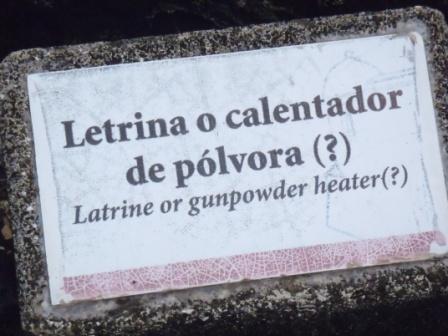The War of Jenkin's Ear "09:33.33N 79:39.99W"

VulcanSpirit
Richard & Alison Brunstrom
Tue 28 Feb 2012 12:21
|
Portobelo (pronounced Portobaylo) is nowadays
a small unimpressive town on Panama's Caribbean coast, but one which has
figured surprisingly large in British history (hence the Portobello areas of
Edinburgh & Dublin, and London's Portobello Road - and interestingly, 'Rule
Britannia').
Portobelo, discovered by Columbus on his fourth and
last voyge in 1502, was the point of departure for the Spanish treasure
fleet carrying home the proceeds of their looting of South America. A fleet left
for Spain every year throughout the seventeenth century carrying almost
unimaginable wealth. Just one vessel, captured by Drake, was laden with the
equivalent of $7m in precious stones, gold, silver and pearls. Sir Francis
Drake, hero of the victory over the Spanish Armada and scourge of the Spanish
Main, was buried at sea just of the coast here in 1596 having died of
dystentery after a disastrous raid on Puerto Rico.
The British attacked Portobelo more than once; most
successfully by Admiral Vernon in 1739. Vernon had been sent to subdue the
Spanish Main in the War of Jenkins' Ear. Robert Jenkins of Llanelli was
a merchant ship captain who in 1731 was boarded by the Spanish Coastguard
in the Caribbean, suspected of smuggling. The Spanish commander had Jenkins'
left ear cut off, and presented to Jenkins, as a warning to the British king. It
seems that things moved slowly in those days for it was not until March
1739 that Jenkins was called to Parliament to give his account (accompanied,
according to some accounts, by his pickled ear in a jar). Uproar, then war,
ensued. Vernon was dispatched. Initially successful, notably at Portobelo, his
campaign fizzled out. But his capture and sacking of Portobelo in November 1739
was treated as a major victory at home and he was feted on his return in
1740. 'Rule Britannia' was performed for the very first time in his
honour.
Portobelo was completely refortified by the Spanish
following Vernon's raid, and it is those fortifications which are visible today.
Portobelo was never attacked again, and declined in importance thereafter as
Spanish ships set out from different ports and increasingly rounded the Horn.
Here is one of the forts (our boat in the background):
  An interpretive sign in the gun battery gives an
interesting concept:
 Portobelo today is a run down small provincial
town. The eighteenth century Customs House (badly damaged in an 1882
earthquake but now largely restored) is splendid, but the town is marred by
modern living - they have discovered plastic packaging but apparently do not
have a rubbish collection service. The whole place is a rubbish dump. Ugh! But
surrounded by miles and miles of protedted jungle wilderness.
|